We Used Fellow's New Coffee Grinder Every Day for 4 Months—And Highly Recommend It
Dotdash Meredith and Yahoo Inc. may earn commission or revenue on some items through the links below.
It grinds coffee precisely and has anti-static technology and tons of user-friendly details.
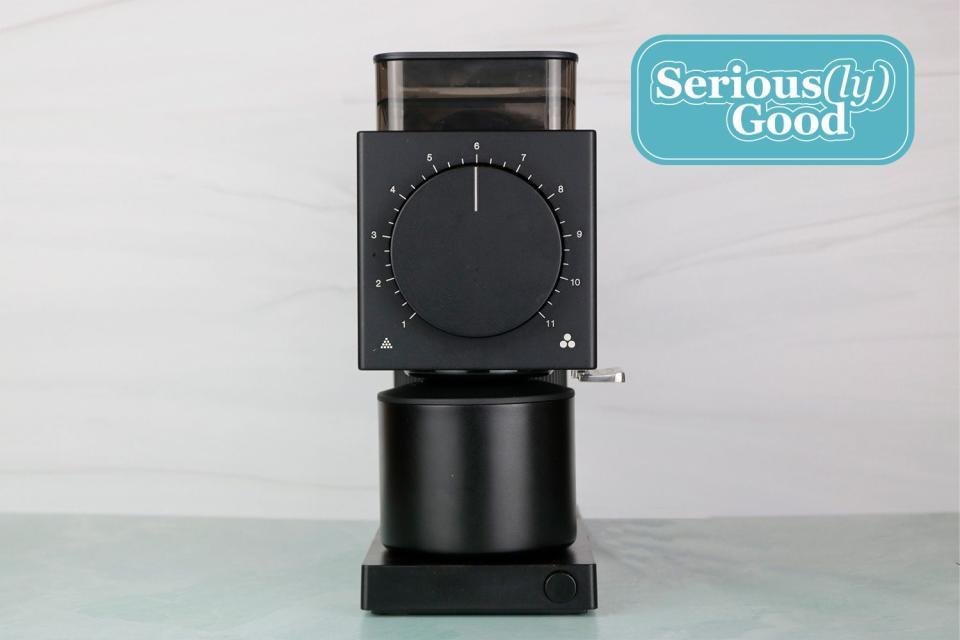
Serious Eats / Jesse Raub
The Fellow Ode Brew Grinder Gen 2 coffee grinder offers precision grinding, anti-static technology, and lots of user-friendly details (like a grind chart under the lid). It’s an excellent grinder that's a huge improvement over the previous version and is now one of our top coffee grinder picks.
When Fellow announced the Ode Coffee Grinder on Kickstarter, it raised $1.2 million in funding and broke the platform’s records for the number of orders in one day. After it was released, however, there were two main issues people found: the Ode Gen 1 had poorly designed burrs and major static problems. Former World Barista Champion and Coffee Vlogger James Hoffmann details both of these in his video here, and we didn’t particularly like that grinder either. With that feedback in hand, Fellow got to work on the Ode Gen 2.
The Gen 2 uses an ionizer (like what you’d find in a hairdryer) as an anti-static measure, as well as re-designed burrs intended to grind much finer (though not to espresso range) and extract coffee more efficiently than its predecessor. Add on a larger hopper and grounds bin, and the new machine was advertised as a major upgrade. But does it execute on its updated promises? We put the grinder into daily use to find out.
Fellow Ode Gen 2 Coffee Grinder

The Tests
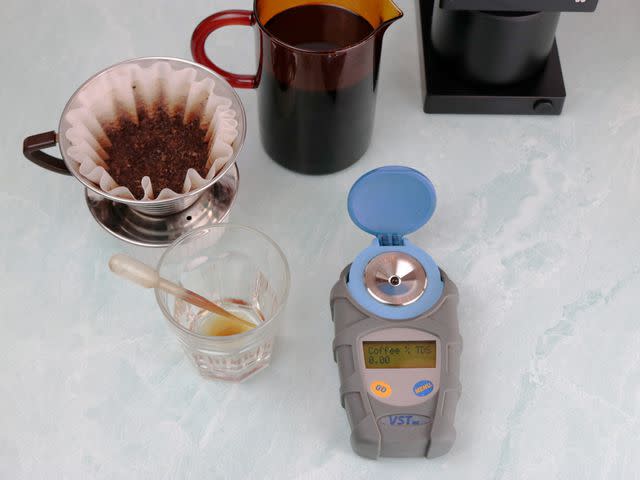
Serious Eats / Jesse Raub
Grind Screening Test: We ground 30 grams of coffee at a standard drip setting and ran it through a Kruve sifter with screens at 500 and 1400 microns to measure what percentage of coffee particles fell into the ideal range between the two.
Extraction Tests: We measured brewed coffee samples with a coffee refractometer to evaluate the level of total dissolved solids (TDS) as a measure of grind quality.
Taste Tests: We used the Ode Gen 2 every day for four months to assess flavor quality across multiple brew methods and different coffee styles.
Usability and Cleanup Tests: We tested out user-friendly features like the magnetic grind cup, volume markings, auto-shut off, and anti-static properties. We also cleaned the grinder and disassembled and reassembled the burr chamber.
What We Learned
It Delivered a Very Precise Grind
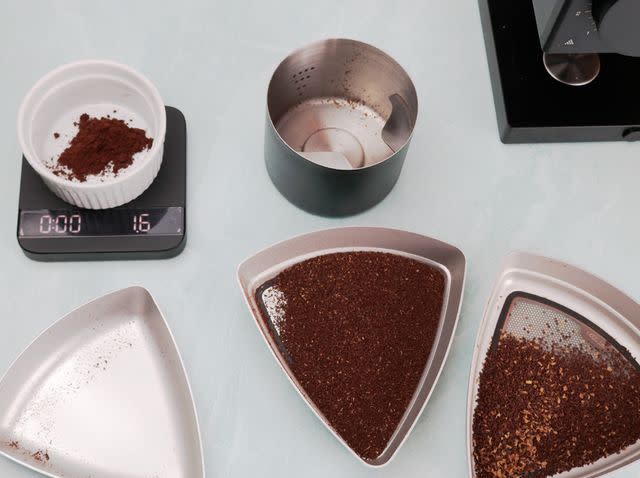
Serious Eats / Jesse Raub
With minimal fines, the Ode Gen 2 was extremely consistent.In order to measure grind consistency, we used a Kruve sifter with screens set at 500 and 1400 microns to filter out any fines or boulders—basically, particles that are too small and big to extract flavor evenly. After dialing in the grind to a good-tasting drip setting, we screened 30 grams of coffee and found that the Ode Gen 2 delivered a much more consistent particle size than the Baratza Virtuoso+, our other top pick, with more than 65% of the particles falling between the two screen sizes compared to the Baratza’s 45%.
That precision likely comes from the Fellow’s wide, vertically-aligned flat burrs. These burrs are highly favored in commercial grinders because the coffee feeds more naturally through the burr set via gravity, and the two wide, flat grinding burrs can create a more precise gap between them, better controlling the particle size of the coffee they’re grinding. Home grinders often use a conical burr set, where a flat ring burr is adjusted closer and further away from a spinning conical burr in the center. It’s easier to align conical burrs, but you often get a wider particle distribution than a flat burr grinder.
However, grind precision doesn’t always translate to better-tasting coffee, as the Ode Gen 2 and Virtuoso+ were neck-and-neck in side-by-side taste tests for sweetness and balance. However, we did notice one difference in the cup: flavor clarity.
Grind Precision Impacted Flavor Clarity

Serious Eats / Jesse Raub
With a more precise grind, we noticed that coffee ground in the Ode Gen 2 produced more pronounced flavors in brewed coffee, especially with lighter-roasted beans. For example, if a coffee featured “raspberry” as a tasting note, we noticed that coffee from the Ode Gen 2 produced a clearer “raspberry” flavor.
Coffee extraction science is always a bit of a guessing game: we can use a spectrum refractometer to take an average reading of TDS in brewed coffee to assess brew quality, but that number is just an average. Finer particles will extract more while coarser particles extract less, so two coffee samples from two different grinders that both read 1.33% TDS on a coffee refractometer brewed with the extract same recipe will have the same concentration of extracted coffee flavor solids, but not the exact same exact flavor solids.
It can be a little confusing to parse coffee extraction theory, but in summary: a coffee brewed from a Virtuoso+ and an Ode Gen 2 might look the same via scientific measurement, but still taste different. Both grinders produced sweet and balanced coffees, but fans of lighter-roasted beans might appreciate the Ode Gen 2’s flavor clarity more.
The Active Anti-Static Technology Worked
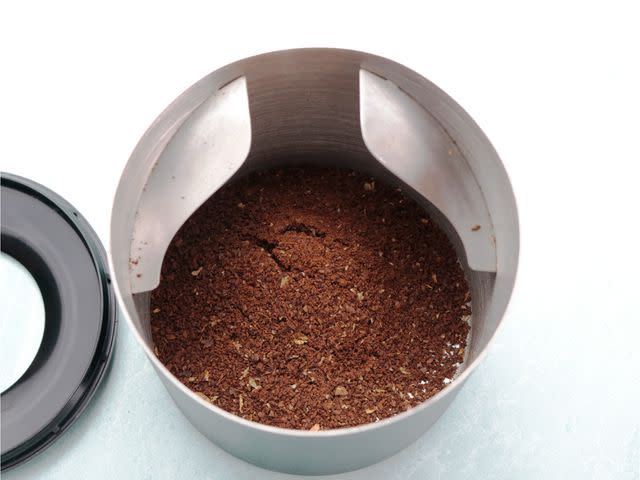
Serious Eats / Jesse Raub
A static-free mound of coffee grounds inside the Fellow Ode Gen 2 grind cup.Static can be a significant issue for home grinders: as coffee passes through the burrs, it builds a lot of static charge that causes chaff (the papery tan flecks more prevalent with light roasts) and grounds to end up on countertops—and can actually hold coffee back in the grinding chute. The Ode Gen 2 incorporates active anti-static technology by adding an ionizer (like what hairdryers use), and, by golly, it really works. While the Gen 1 was notorious for up to a gram of coffee being stuck in the grind chute and counters dusted with chaff and grounds, the Gen 2 sees coffee drop into the grind cup neatly every time.
Other grinders might use an anti-static plastic in their grind cup that slowly and passively dissipates any charge after around 40 seconds. The active anti-static measures in the Ode Gen 2 use the ionizer to actively dissipate static while the coffee is ground, which is unique for a home grinder. Just like the vertically-aligned flat burrs, active anti-static measures are usually reserved for commercial grinders. Over time we noticed that it’s worth brushing out the grind chute to keep the anti-static system working cleanly, but it also took three months before this was necessary.
User-Friendly Details Elevated the Grinder
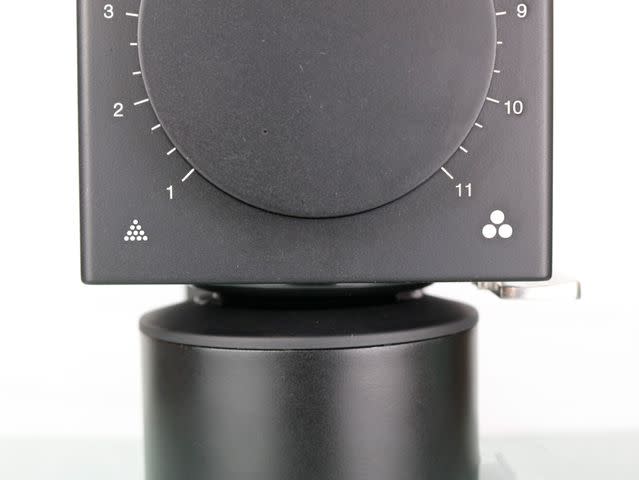
Serious Eats / Jesse Raub
Some of the Ode Gen 2’s best features were the small, user-friendly design details, including an auto-shutoff function. While most home grinders rely on a manual toggle switch or timer, the Ode Gen 2 automatically shuts off a few seconds after the burrs finish grinding coffee. It’s a small, but helpful, detail.
We also really appreciated how clear the grind-size icons were on the adjustment dial, showing which direction is finer and coarser with small or large dots. There’s also a grind-size chart printed on the underside of the lid that gives you a starting range for a variety of specific brew methods, including Aeropress, pourover, and automatic drip coffee makers. These might seem like small details, but most grinders require a guessing game when you set them up for the first time. Right out the box, even without reading the instructions, the workflow of this grinder felt seamless.
Finally, the grind cup features a strong magnet to make sure it’s properly centered under the chute. While the lid of the grind cup can be finicky to pull on and off, the magnetic pull is really satisfying and it works to center the cup perfectly—until it doesn’t. Some people have reported the magnet falling off of the cup, which renders this system useless, and in our testing we even had an issue where the cup was bumped off center after aligning it, causing grounds to miss the cup and end up pushing against the lid. This caused coffee to back up into the grinder, which required disassembling the burrs in order to clear the jam.
The Verdict
Fellow Ode Gen 2 Coffee Grinder

Pros
Any light-roast coffee fanatic looking for a slight boost in flavor performance and doesn't mind the extra cost would appreciate the Ode Gen 2. It’s also a compact and attractive grinder and would be a great addition to any aesthete’s counter. The Fellow Ode Gen 2 delivers excellent grind consistency and flavor clarity. It’s easy to use, and looks great, to boot. It’s a well-designed grinder with lots of amazing user-friendly details, and it has a compact body that’s easy to fit on any counter.
Cons
Well, it’s expensive. The Ode Gen 2 is the highest-priced non-espresso grinder for home use on the market. Compared to our other favorite models from Baratza and OXO, it offers more usability and aesthetic upgrades than performance differences. Also, it’s prone to jamming if the grind cup isn’t aligned properly. If the lid blocks off the grind chute, the coffee can back up all the way into the grind chamber, which then needs to be disassembled to fully clear. It only happened to us once in four months of everyday usage, but clearing the jam required removing the faceplate with a screwdriver, emptying the coffee, re-aligning the burrs, and re-attaching everything.
Key Specs
Dimensions: 9.4 x 4 x 9.8 inches
Weight: 10 pounds
Burr type: Stainless steel flat burrs
Number of grind settings: 30
Warranty: 2-year, or 3-year with registration
Price at time of publish: $345
FAQs
Is the Fellow Ode Gen 2 worth it?
The Fellow Ode Gen 2 offers a major improvement in grind consistency and anti-static measures over the Gen 1, but it comes at a cost. While the Ode Gen 1’s original list price of $300 was already pricey, the $345 price tag on the Gen 2 makes it the most expensive home grinder designed for brewed coffee. In four months of daily testing, we found that the Ode Gen 2 delivered high-quality grinding with great usability features (like a grind chart printed under the lid), but its high price point might not work for everyone. In our testing, we also found comparable grinders that were less expensive.
What are the differences between the Ode Gen 1 and Gen 2?
The Fellow Ode Gen 2 features an upgraded burr set that delivers much more grind consistency and a finer range than the Gen 1 version. It also has active anti-static technology that reduces the amount of chaff and grounds that can make counters messy, and a bigger hopper and grind cup.
Can the Ode Gen 2 grind for espresso?
While the updated burr set in the Fellow Ode Gen 2 can grind much finer than the Gen 1 version, it still is not designed for espresso use. Espresso requires a much finer grind range, and more grind settings in order to properly dial in an espresso shot.
Read More:We Tested 14 Coffee Grinders—Here Are the Best Ones

